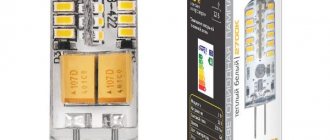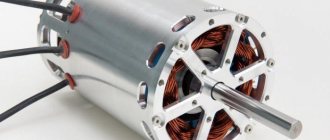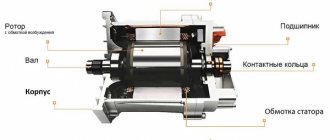You don’t have to be an expert to understand that every autonomous system that runs on electricity requires independent sources of electricity. We are talking about mobile devices, vehicles in which batteries are installed. The power supplies that are common today are of limited capacity and have a relatively short lifespan. Graphene batteries do not have these disadvantages. What type of battery is this, what is their design, pros and cons, where to find it - this is discussed in the article.
Graphene batteries are lightweight and highly conductive.
What is graphene
Previously, carbon was available in two forms - graphite and diamond. The first one was used as a pencil lead, and diamond is the most durable material on Earth. In 2004, British scientists of Russian origin K. Novoselov and A. Geim created a new form in the laboratory - graphene.
Based on Wikipedia, graphene is a substance with a film-like structure that is “assembled” from carbon atoms. Such a two-dimensional film does not occur in nature. And it is done by a person, under conditions of high pressure and temperature.
Essentially, graphene is a plane of graphite, separated from the overall structure of the material. The carbon atoms of graphene “bond” with each other and form a hexagonal crystal lattice. Due to the high-density bond, the substance is characterized by a high degree of rigidity and an increased thermal conductivity reserve.
The fact is that the electrons in the substance remain mobile, which means the material obtained in 2004 is suitable for use in semiconductor circuits and power supplies. The graphene battery weighs little, and at the same time has a capacity greater than that of currently available analogues.
Market
Graphene research will continue to expand over the next decade, promising to improve people's lives. The global graphene battery market was valued at $49 million in 2022 and is projected to reach approximately $399 million by 2027, registering a CAGR (compound annual growth rate) of over 31% during the forecast period.
Market growth is driven by the use of graphene batteries in electric vehicles, portable electronic devices and a sharp increase in the use of non-traditional energy sources. The automobile segment is expected to have the highest growth rate due to rising demand for electric vehicles due to environmental concerns.
The Asia-Pacific region is projected to account for the largest share of the graphene battery industry. Key countries driving demand are China, Japan and South Korea. Europe is likely to hold the second largest share in the global graphene battery market.
Features of graphene batteries
For the discovery of graphene, scientists were awarded the Nobel Prize, since the resulting material is unique, and in addition to its thinness (sheet thickness is 1 atom), it is characterized by other properties:
- high electrical conductivity;
- flexibility;
- thermal conductivity;
- increased mechanical strength;
- transparency;
- impermeability to many gases and liquids.
Method for producing graphene.
Graphene-based technologies have attracted the interest of manufacturers, and they are ready to allocate serious funds for in-depth study. This material is used in various industries: high technology, medicine, ecology, space and military industries, automotive industry.
"New carbon" has seriously interested car manufacturers. Power supplies based on it are most suitable for electric vehicles. Due to the increased activity of charged particles, it was possible to increase the useful capacity of the battery. The material, arranged into a flat conductor, is capable of accumulating a large charge in a short period of time.
At the same time, at the initial stages of development, lithium was added to graphene sheets, but it reacted poorly to water and other oxidizing agents, and for industrial purposes it was necessary to look for something else. Lithium-graphene batteries are characterized by a long charging time, so they have not taken root in the automotive industry. And over time, a magnesium-graphene power source appeared.
Device
Today, a graphene battery is a relative concept, since there are still few manufacturers of such devices, and they are in no hurry to report on the features of the technological process.
The “pioneer” of the production of graphene batteries is a company from Spain, Graphenano, which announced the first sample back in 2015. It charges in just 8 minutes, and the energy intensity is 10 times higher than that of lithium-ion counterparts. Grabat Energy engineers took part in the opening of the enterprise, which has enough capacity to produce 80 million cells per year.
A new type of power supply is made from a special metal-polymer housing. A pair of copper and aluminum plates are inserted into it, equipped with leads - electrical contacts. Between the electrodes there is an electrolyte, which can be in a liquid or solid state. The anode contains a reducing agent, and the cathode contains an oxidizing agent. To prevent negatively charged lithium atoms from moving freely between the electrodes, a separator is provided in the housing. In general, graphene batteries are similar in design to lithium-polymer batteries, only in the former the electrolyte and separator are graphene.
The operating principle is similar to lithium-ion batteries: during charging and discharging, lithium ions move from the anode to the cathode through the electrolyte. At this time, electrons reach the anode or cathode through an external circuit, which is necessary to create an electric current in it.
Operating principle:
The operating principle of a graphene battery.
- During discharge, the anode experiences an oxidative chemical reaction - free electrons appear and rush to the cathode, where there are few of them. But there is a separator in their way, and the only way out is to the load circuit, where the battery is closed. Electrons, moving in a directional manner, supply energy to the connected device.
- Lithium ions with a positive charge also rush to the cathode, but they pass freely through the separator.
- When all the electrons move to the cathode, the battery is discharged.
- When a certain voltage is applied to the electrodes, a process is started where the ions move in the reverse order. That is, electrons accumulate on the anode and remain there until the load is connected.
Now there are two approaches to the manufacture of innovative batteries:
- American model (graphene-polymer battery). The active substance is lithium cobaltate, and the plate material is graphene and silicon;
- Russian model. The lithium salt is replaced by magnesium oxide, which is lighter and less toxic.
It doesn’t matter what type, a graphene battery is much more efficient than its analogues, since it has become possible to increase the speed of movement of charged particles.
Development prospects
It is still too early to talk about the global and full-scale implementation of graphene batteries and batteries.
But if this can be achieved, then great prospects will open up for graphene. These power supplies can be used for:
- electric cars;
- electric gas stations;
- power plants;
- wind stations;
- solar panels, etc.
This is also an improvement in the environmental situation created by cars with internal combustion engines.
Graphene is one of those materials that can literally change modern ideas about the world and electric cars in particular. This is an extremely promising direction. Therefore, we should expect graphene batteries to go on sale very soon. The first models for mobile devices are already on the market. Moreover, they cost 100–120 dollars.
Advantages and disadvantages
Graphene-based batteries are more efficient than their analogues, and it’s only a matter of time before they are used everywhere. Battery benefits:
- light weight. The weight of two square meters of graphene is 1.5 g, which is much less compared to lithium-ion analogues;
- high conductivity. Due to the porous crystal structure of the graphene crystal, electrons are able to move without obstacles. The electrical conductivity of the substance is higher than that of semiconductors, so the battery charges faster;
- strength. Graphene in this regard is practically not inferior to diamond, therefore power sources based on it are characterized by high resistance to destruction;
- waterproof. They have learned to “transform” graphene plates into a watery gel, and with such a solution the time required for recharging is reduced;
- high specific capacity. The graphene electrode not only accumulates lithium ions on its surface, but also allows them to penetrate into the material. It turns out that there are more charged particles in the battery, and at the same time the capacity increases;
- environmental cleanliness and safety;
- good maintainability;
- low price of components.
The technology also has disadvantages:
- low density. Ready-made batteries are too large and are not suitable for installation in mobile devices;
- the technology for maintaining a flat structure is complex, and this is reflected in the final cost of the finished product;
- the current small number of charge-discharge cycles;
- Batteries are not yet produced in large quantities.
Nevertheless, the prospects for such power sources are serious. With a graphene battery, a car can travel up to 1000 km without recharging, and it will take about 10 minutes to restore capacity. True, you can’t do without a powerful gas station.
Areas of operation
The material, due to its unique characteristics, can cause a revolution in many areas of industry. In addition to batteries for electric vehicles, batteries for mobile devices are being actively developed.
Thus, the South Korean giant Samsung is introducing graphene into power supplies for smartphones using graphene balls. But there are no full-fledged compact batteries yet, but the corresponding technologies are used in the manufacture of external batteries, which can charge a gadget not in an average hour and a half, but in 10 - 12 minutes.
Samsung is going to use graphene batteries in its smartphones.
Again, as for phones, in 2016 Huawei introduced a graphene-coated lithium-ion battery. It remains operational at temperatures up to +60° C, while the limit for existing analogues is +50°.
The trend is that lighter materials are now being created. And graphene is the very substance that will be useful for the production of flexible displays, computing devices, data storage devices, etc.
Financial problems of implementing scientific achievements
The problem with creating new batteries is that too many companies are currently engaged in research in the field of batteries. There are simply a huge number of projects - from “foam” and liquid batteries to batteries with exotic compounds in the electrolyte. And there is no clear leader among all these companies. This situation does not arouse much enthusiasm among investors, who are not too willing to allocate money for new projects.
And a lot of money is required. “In order to create a small industrial line for the production of batteries created using new technologies, about $500 million is required. And even if a promising battery were created, it is not so easy to transfer scientific work into the commercial sphere. Mobile device developers or electric vehicle manufacturers will test new batteries for years before making a decision. Investments during this time will not pay off, and the development company will be unprofitable. Scientists say that it is difficult to set up an industrial line costing $500 million, especially if the annual budget is $5 million.
And even if the new technology hits the market, the manufacturer of the new type of battery will have to go through a difficult period of adaptation and finding buyers. But so far no one has reached this stage. Thus, the companies Leyden Energy and A123 Systems, which developed new, quite promising technologies, never entered the market. They simply didn't have enough money for this. Two more promising energy startups, Seeo and Sakti3, were acquired by other companies. Moreover, the amounts of these two transactions were much lower than what the first investors of the companies were counting on.
The largest electronics manufacturers, Samsung, LG and Panasonic, are more interested in improving their current products and increasing the number of their functions than in obtaining new types of batteries. Therefore, the process of optimizing Li-Ion batteries, created back in the 70s of the last century, is still ongoing. We can only hope that graphene batteries will still be able to break the vicious circle.
Where to buy battery
Such power sources have not yet been sufficiently studied, so the authorities of many countries are in no hurry to give them the green light. However, the American company Real Graphene is already selling batteries based on this technology. The devices can withstand up to 1,500 charge-discharge cycles before losing capacity and are also more resistant to heat.
Real Graphene power banks with a capacity of 3000 mAh can be charged in 20 minutes using a 60 W charger. The price of a 10,000 mAh model with an output power of 50 W is $60. A 20,000 mAh version with 87 W charge, capable of simultaneously powering three devices, will cost $77.
That is, the time when it will be possible to buy a graphene battery for a smartphone is not far off.
Ecology
The transition to a new type of food made from graphene will have a positive impact on the environment. After all, with light, durable and capacious graphene batteries, there is no need to use heavy gasoline or diesel engines in cars. This means that the volume of harmful substances released into the atmosphere will be reduced.
There will be no need to worry about disposal of hazardous acid and alkaline batteries. After all, if aluminum or other metals from old batteries can still be used after secondary processing, then lead and other heavy elements must be disposed of much more carefully.
The world will become much cleaner without oil spills left after tanker accidents, discarded old acid batteries, harmful chemical production that poisons rivers and lakes. All this will become possible after the widespread use of graphene batteries.
DIY graphene battery
Creating a two-dimensional structure of graphene and securing its properties is a complex task that many scientists are working on. You cannot make such a battery with your own hands, unless you get the substance itself. To do this, graphite is processed into powder, chemically treated and applied to an aluminum substrate. One way to get the desired composition:
Graphite powder.
- Take graphite powder and dishwashing liquid, place it in a metal container and mix for two days with a mixer powered by an asynchronous motor.
- The result will be foam in which microscopic graphite particles will be suspended.
- The foam is dried and dissolved in a varnish for processing aluminum - graphene is obtained.
- The resulting composition is applied to an aluminum substrate, on the basis of which a magnesium-graphene power source is assembled.
Graphene batteries are the future, we just need to fine-tune all the technical details of production. The technology is considered revolutionary and can seriously impact the world of electric vehicles, smartphones and other portable gadgets.
Other developments
In addition to Russia and the United States, work to improve graphene batteries is actively being carried out in other countries.
Australian scientists have discovered a way to keep graphene plates in a stable state. After all, their instability, the desire to return to the three-dimensional state characteristic of ordinary graphite, was one of the main problems of this material. To prevent this, the scientists placed graphene sheets in a water gel, which prevents them from sticking together. In addition, a battery of this design can be charged in a matter of seconds. The cost of the gel is low, because it consists only of water and carbon.
Almost every year new technologies appear in the world that make it possible to more rationally use depleting natural resources. These include the invention of graphene, which in the near future may cause revolutionary changes in the transport system due to its unique properties of accumulating and storing electrical energy in large quantities. It is likely that anyone can make a graphene battery with their own hands using a 3D printer.











